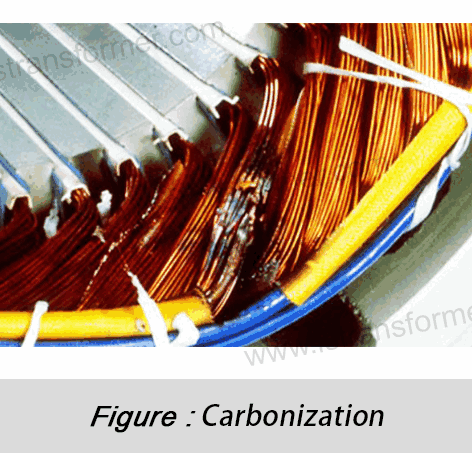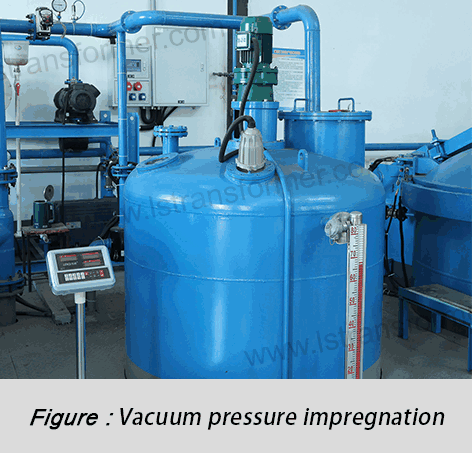How to prevent Transformer Sudden Short-Circuit Failure? —Analyzing Short-Circuit Resistance Verification and Structural Reinforcement Solutions
How to prevent Transformer Sudden Short-Circuit Failure?
—Analyzing Short-Circuit Resistance Verification and Structural Reinforcement Solutions
In power grid systems and industrial distribution, "transformer sudden short-circuit leading to winding deformation and insulation breakdown" has become a global challenge for electrical equipment reliability. According toIEEE C57.12.00 statistics, short-circuit current impacts can subject windings to electromagnetic forces exceeding 100 kN, causing 40% of transformers to fail after their first short-circuit event. This article systematically explains short-circuit resistance verification processes and structural reinforcement technologies based on international standards likeIEC 60076-5 and IEEE C57.12.90, supported by cross-regional engineering validation data.
Content
1. Destruction Mechanism and Risk Quantification of Short-Circuit Current
● Electromagnetic Force Impact of Short-Circuit Current
(1)Short-Circuit Current Calculation and Electromagnetic
Force Generation When a short-circuit occurs on the transformer’s secondary side, the primary current surges to 10–25 times its rated value, determined by the transformer’s impedance voltage percentage (%).
Formula:

Variable Definitions:
 : System rated voltage
: System rated voltage
 : Impedance voltage percentage (typical range: 4%–12%)
: Impedance voltage percentage (typical range: 4%–12%)
 : Transformer rated current
: Transformer rated current
Example: A 1000 kVA transformer with Z%=6% and Irated = 1443A has a short-circuit current of:

(2)Direct Mechanical Damage from Electromagnetic
Forces Per the Lorentz force formula, electromagnetic forces between adjacent winding conductors are:

Variable Definitions:
 : Leakage flux density (0.5–1.2 T, determined by winding spacing and current)
: Leakage flux density (0.5–1.2 T, determined by winding spacing and current)
 :Short-circuit current
:Short-circuit current
 : Conductor effective length
: Conductor effective length
Example:If B=0.8T and L=2m, the force is: F=0.8×24,050×2=38,480N(≈38.5kN)
Failure Modes:
Axial Compression: High-voltage windings experience inward pressure, leading to inter-turn insulation crushing.
Radial Expansion: Low-voltage windings expand outward, causing support strut fractures and eventual collapse.
● Thermal Effects and Insulation Degradation
(1) Joule Heating Mechanism:
Short-circuit current generates heat via winding resistance:

Variable Definitions:
·R: Winding resistance (Ω)
·t: Short-circuit duration (typically ≤2 seconds)
·c: Specific heat capacity (copper: 385 J/kg·K)
·m: Conductor mass
Example: For a 50 kg copper conductor with AIsc =24kA and t=1s:

(2)Insulation Failure Process:
·Thermal Decomposition: Epoxy resin carbonizes when temperatures exceed 105°C (Class A insulation limit).
·Dielectric Strength Reduction: Insulation paper breakdown voltage drops 5%–8% per 10°C rise (IEC 60076-5).
·Inter-Turn Short Circuits: Partial discharge inception voltage falls from 15 kV to below 6 kV, causing permanent damage.
2.International Standards for Short-Circuit Resistance Verification
● IEC 60076-5:Dynamic Stability Testing Core standard for transformers ≤35 kV.
(1)Test Procedure:
·Pre-short-circuit state:Apply rated current; monitor temperature and vibration.
·Short-circuit impulse:Apply symmetrical current at 75% tap position for 0.25 seconds.
·Repeat three times to assess cumulative damage.
(2)Pass Criteria:
·Reactance change ≤2%
·Winding deformation ≤1.5 mm (measured via laser displacement sensors).
● IEEE C57.12.90:Mechanical Strength Validation Key standard for large-capacity transformers in North America.
(1)Requirements:
Capacity (kVA) | Short-Circuit Cycles | Axial Force Limit (kN) |
≤2500 | 3 | 80 |
2501–10,000 | 2 | 150 |
>10,000 | 1 | 300 |
(2)Test Methods:
·Static pressure simulation using hydraulic cylinders (60-second hold).
·Vibration frequency sweep (10–2000 Hz); natural frequency shift ≤5%.
3. Structural Reinforcement Solutions for Enhanced Short-Circuit Resistance
● Optimized Winding Support Systems
(1)Reinforcement Techniques:
·Epoxy-Resin Impregnated Struts:
Glass-fiber-reinforced epoxy (bending strength ≥350 MPa, 4× stronger than wood) reduces radial deformation from 3.2 mm to 0.8 mm.
·Axial Compression Systems:
Disk spring assemblies (preload ≥50 kN) mitigate axial compression, increasing withstand cycles from 1 to 3 (per IEC 60076-5).
(2)Performance Comparison:
Parameter | Traditional | Reinforced |
Axial Deformation (mm) | 3.2 | 0.8 |
Short-Circuit Cycles | 1 | 3 |
● Core and Clamping Structure Enhancements
(1)Reinforcement Techniques:
·Low-Hysteresis Silicon Steel: 23ZDKH90 steel reduces core vibration energy transfer by 40%, avoiding resonance (ISO 10816-3 compliant).
·Multi-Layer Welded Clamps: Q345B steel (yield strength 345 MPa, 47% higher than Q235) absorbs 300 kN axial forces (meets IEEE C57.12.90).
(2)Mechanical Properties:
Material | Yield Strength (MPa) | Damping Ratio (ξ) |
Q235 Steel | 235 | 0.02 |
Q345B Steel | 345 | 0.05 |
In Summary
Conclusion Modern transformers reinforced viaIEC 60076-5 andIEEE C57.12.90 standards can withstand ≥50 kA short-circuit currents (IEC Level 4). Global cases show a 70% reduction in annual failure rates (ABB 2023 Whitepaper). For customized solutions, contact our technical team for simulation, testing, and validation services.
Contact Us
LuShan, est.1975, is a Chinese professional manufacturer specializing in power transformers and reactors for50+ years. Leading products are single-phase transformer, three-phase isolation transformers,electrical transformer,distribution transformer, step down and step up transformer, low voltage transformer, high voltage transformer, control transformer, toroidal transformer, R-core transformer;DC inductors, AC reactors, filtering reactor, line and load reactor, chokes, filtering reactor, and intermediate,high-frequency products.
Our power transformers and reactors are widely used in 10 application areas: rapid transit, construction machinery, renewable energy, intelligent manufacturing, medical equipment, coal mine explosion prevention , excitation system, vacuum sintering(furnace), central air conditioning.
Know more about power transformer and reactor :www.lstransformer.com.
If you would like to obtain customized solutions for transformers or reactors, please contact us.
WhatsApp:+86 17267488565
Email:sales@hnlsdz.com

 EN
EN
 FR
FR DE
DE ES
ES



